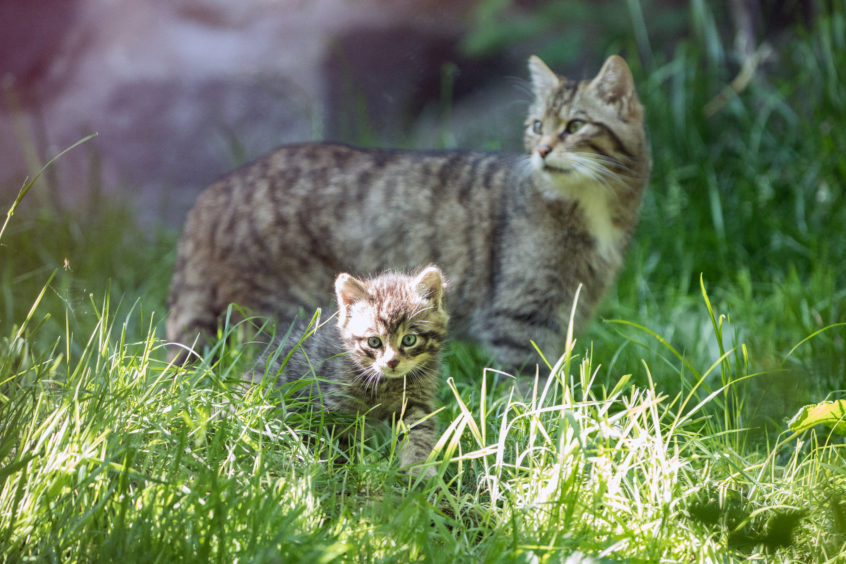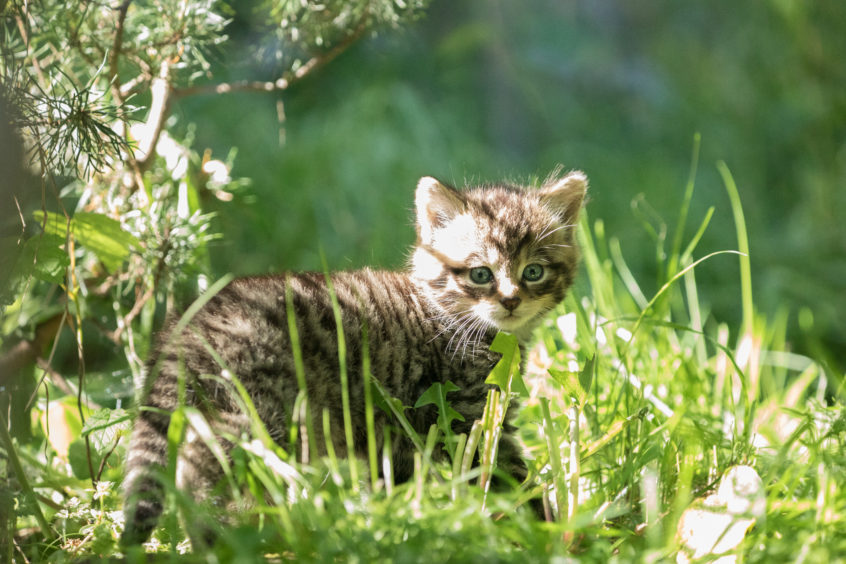Wildcats are set to return to the Cairngorms in significant numbers in a £3.2m project.

A report published in February by the International Union for Conservation of Nature’s Cat Specialist Group says that populations of wildcats, which have resided in Scotland for thousands of years, are no longer viable due to hybridisation with domestic and feral cats.
With extinction looming, a £3.2m rescue package will see the wildcats reintroduced in the Cairngorms National Park from 2022.
The Royal Zoological Society of Scotland will lead the Saving Wildcats project, which will build on the work of the Scottish Wildcat Action partnership, supported by a £3.2m EU LIFE grant and co-funding from the Garfield Western Foundation, the National Trust for Scotland, the People’s Trust for Endangered Species and the European Nature Trust.
The six-year project will be based at the RZSS’s Highland Wildlife Park near Aviemore, which will provide breeding, veterinary care, remote monitoring and training.
Video of wildcat kittens at the Highland Wildlife Park is above this story.

Helen Senn, head of conservation and science programmes at RZSS, said: “Wildcats are on the brink of extinction in Scotland but it’s not too late.
“With funding in place, it is tremendously exciting to begin the UK’s first wildcat release project and bring together all the necessary resources and expertise to make it happen.
“Using wildcats from the existing captive population, as well as cats from Europe to boost the gene pool, the reintroduction centre will provide a sustainable source of wildcats for years to come.
“The Cairngorms have historically been a key part of the wildcat range and we are working closely with the partners to understand which is our preferred first release site.
“Further wildcat releases may also take place in other strategically important locations across Scotland, with the potential to support well-planned future efforts in the rest of the UK.”
Prior to the first release of wildcats in 2022, the RZSS will work with local communities to advise them on the biggest threat to wildcats – feral domestic cats that have not been neutered.

David Barclay, the RZSS’s cat conservation project officer, said: “People should make sure their domestic cats are neutered and chipped and we will be very visible in the community and engaging in local areas to educate people.
“We have lived with wildcats for thousands of years and they are no danger to humans. By their nature they are very elusive and live in remote areas. They do their best to stay away from populated areas.
“We will be confirming release sites after the first year of the project.”
Roseanna Cunningham, cabinet secretary for environment, climate change and land reform, said: “The wildcat is one of our most iconic Scottish species but its conservation faces serious challenges.
“Fortunately in Scotland we have a fantastic group of scientists and specialists who are working together with the Scottish Government, the Royal Zoological Society of Scotland and others to explore all options to save the species here.
“Today is an important step towards the conservation of the ‘Highland Tiger’ in Scotland, but there’s a lot of work still to be done.”
Andrew Kitchener, chair of Scottish Wildcat Action, said, “The Scottish Wildcat Action partnership is delighted with this news and it is testament to the strong working partnership formed under Scottish Wildcat Action that we have been able to secure funding for this next critical phase of work.”
Martin Gaywood, SNH Species Projects Manager, said, “Releasing species into the wild for conservation purposes is very complex and challenging.
“With the first wildcats expected to be released into the wild in 2022, now is the time for a public discussion on domestic and feral cat populations, and how we manage these, and the public will have an important role in helping minimise future hybridisation.
“Responsible cat ownership, including microchipping, neutering and vaccinations, is one way we can help reduce devastating effects on wildcats.”